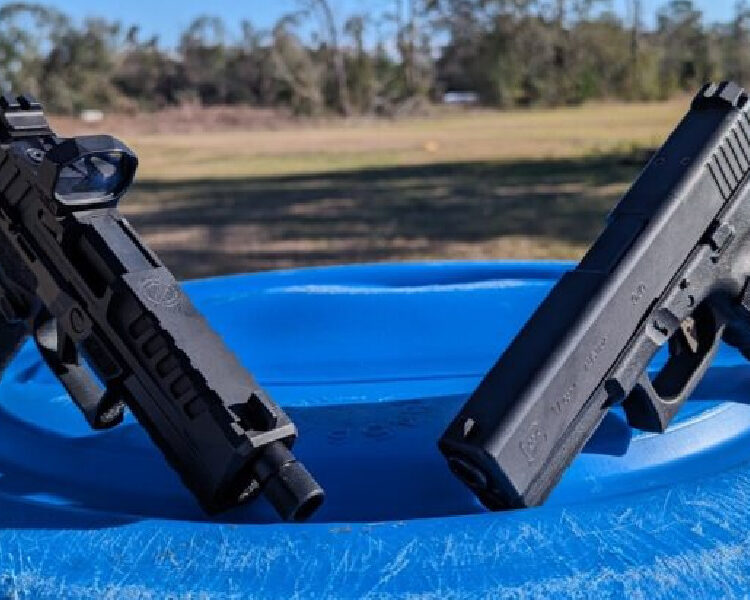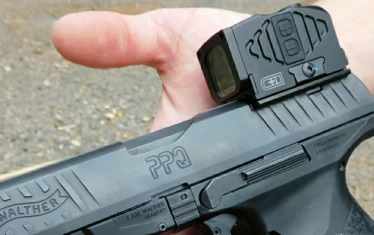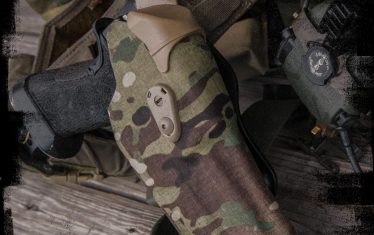The current pistol market is gripped by the polymer frame, striker fired, double stack 9mm pistol. Most often, when you see a new pistol release, it probably has those qualities.
The model that started this trend and still dominates the market is the Glock 17. One of the latest models to enter this same market is the Springfield Echelon. Today, we are going to compare and contrast these two pistols to see how the new guy stacks up against the old favorite.
Modularity
One of the best features of modern firearms is modularity. A handgun fills a variety of roles when it can be customized for your needs and purposes. Both the Echelon and the Glock 17 are very modular pistols.
Glock’s modularity comes down to the very simple design of Glock firearms. They are so easy to work with you can take one eight-hour armorer’s course and be a Glock pro. All you need is a single punch to disassemble the entire gun.
Plus, Glock’s undeniable dominance over the market ensures it has a very healthy aftermarket. You can upgrade pretty much every part of a Glock to make it the gun you want it to be. Glocks come standard with a rail for accessories, and the MOS models offer an optics cut and mounting plates to accommodate various optics.
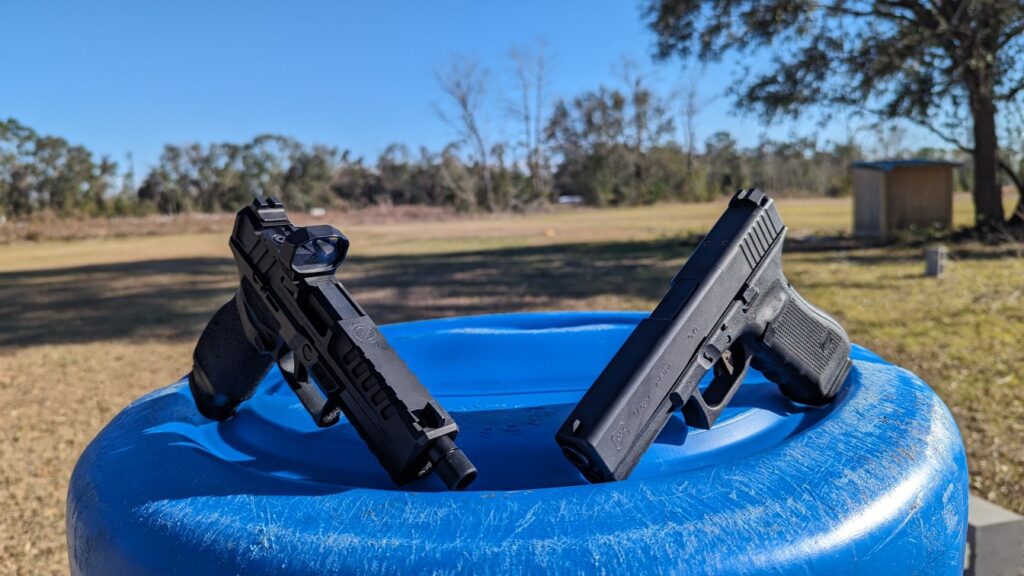
With the Springfield Echelon, users get a much newer gun that doesn’t have anywhere near the aftermarket. Sure, it can certainly build, and likely will, but that aftermarket doesn’t exist as of this writing.
Still, the Echelon offers a pile of modularity. First, the fire control group is entirely contained to a removable chassis. Springfield calls it the COG, and users can remove it to swap grip modules that vary in size.
The Echelon also comes with a rail and my favorite optic mounting system, the VIS. The VIS uses a series of strategically placed threaded holes to fit a ton of different optic footprints. They are paired with the VIS pins, which act as recoil bosses that can also be placed in different locations to accommodate different optics. The system allows the optic to sit lower because it is plate-free.
Ergonomics
Ergonomics can be subjective to the individual user. I prefer the thinner Echelon grip backed by the more aggressive rear beavertail and the trigger guard undercut. I feel that a higher grip is more comfortable. Objectively speaking, though, the higher grip does make the gun easier to control.
The Glock 17 series comes with a set of removable inserts to change the size and shape of the grip and integrate a larger beavertail in its place. The Echelon doesn’t come with the same type of inserts, but users can swap the frames from three different sizes. Glock’s method is admittedly much cheaper and logistically more sound.

When it comes to controls, these firearms are very similar in their approach. There is no manual safety, and controls are limited to a slide release, trigger, and magazine release. The Echelon takes an ambidextrous route with its controls. Glock incorporates an ambidextrous slide release in the Gen 5, but the magazine release is reversible, not ambidextrous.
How big of a deal is this? That’s for you to decide. Personally, I like the simplicity of an ambidextrous design. If I need to switch hands for any reason, I’m glad I can use the gun with ease.
Accuracy
When it comes time to punch holes in paper, you won’t be disappointed by either gun. The use of a partially cocked striker ensures you always have a nice, crisp, and enjoyable trigger. Both guns deliver excellent stock triggers. While some people love to race out and change their triggers, I hardly ever see a real reason to do so.
Where the Echelon impresses a bit more than Glock is their stock sights. The U-Notch design is easy and quick to see, making it easy to get, and stay, on target. Glock’s stock plastic sights work, but they aren’t anything special.
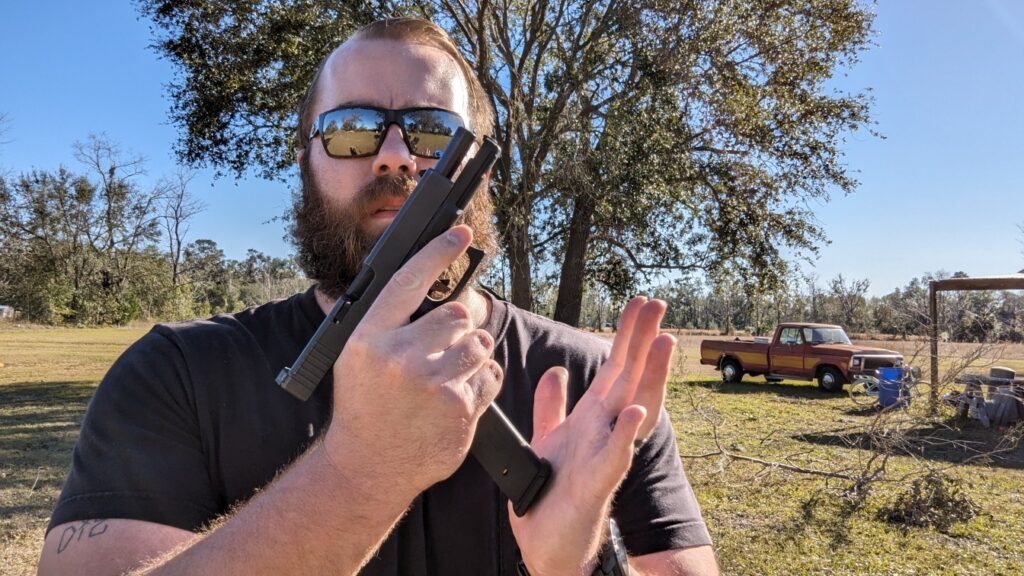
When it comes down to mechanical accuracy, the Echelon and Glock 17 aren’t likely to be much different. They’ll shoot straighter and more consistently than most shooters in the first place. Any accuracy issues at handgun ranges reflect on the shooter more than the gun. Still, the gun plays a role in helping reduce human error.
In my experience, both guns can easily engage targets at 25 yards with speed and good accuracy. If you back off to 50 yards, the guns require a more skilled hand but are still capable of engaging USPSA-sized targets. Add a red dot to either gun, and they become even easier to shoot.
Reliability
I have only one Glock 17 and one Echelon, so my sample size isn’t exactly huge. In my small sample size, I’ve had no problems with either gun.
I’ve fired hundreds of rounds through the Echelon and more through the Glock 17 due to its age and the years I’ve owned it. The Glock 17 and Echelon both handle very well in the reliability department. This includes all weights and types of ammo I can put through the guns.
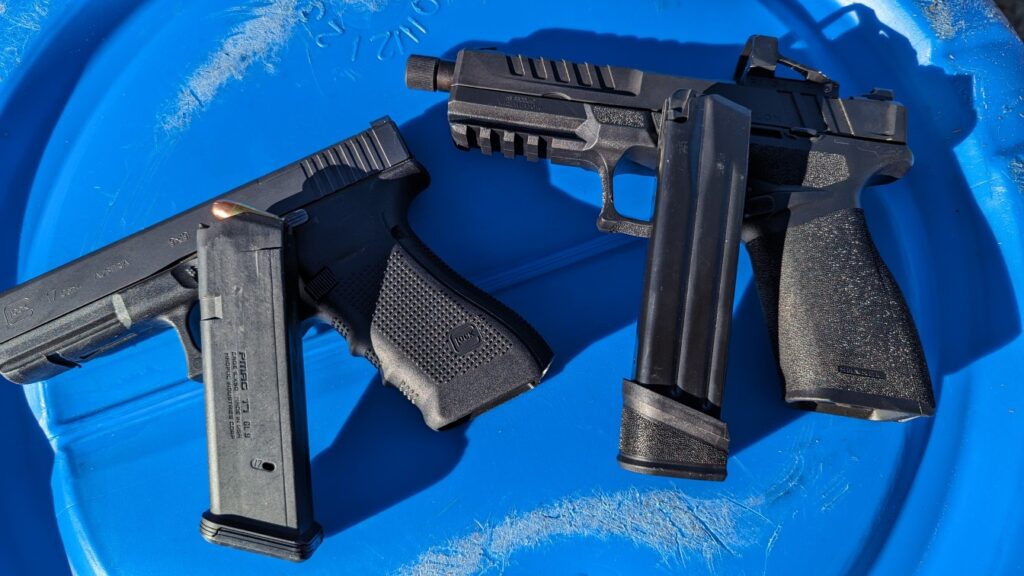
Glock has a well-established reputation for total reliability. These guns are absurdly reliable and have proven themselves over decades of service with countless police and military forces. They are reliable enough that they’ve become the choice of SOCOM for a reason.
The Echelon is the new guy. As the new guy, it is less proven, and that only comes with time and use. While I’m sure the Echelon will establish a reputation for reliability, the Glock already has that reputation.
The Price Tag
Finally, cost is a big factor in any firearm’s purchase. For the end user, price matters, and when it comes to the Glock 17 and Echelon, the price difference is fairly small. The Glock 17 Gen 5 guns are about $40 cheaper on average than the Echelon. It’s not a huge difference, but it is notable and deserves to be mentioned.
Glock has dominated the handgun market for decades now and will likely continue to do so for the foreseeable future. They are rooted deep into the duty and defensive world. The Springfield Armory Echelon pistol seems to be one of the more modern pistols on the market with many great features.
At the end of the day, there isn’t ever going to be a clear winner. Each gun offers its own benefits, and it’s up to you to decide. Or maybe you want both? Why not?





